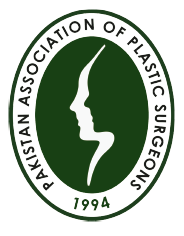
chest
It is the surgical process of rebuilding the shape and look of a breast, most commonly in women who have had surgery to treat breast cancer. It involves using autologous tissue, prosthetic implants, or a combination of both with the goal of reconstructing a natural-looking breast. This process often also
includes the rebuilding of the nipple and areola, known as nipple-areola complex (NAC) reconstruction, as one of the final stages. Breast reconstruction is a large undertaking that usually requires multiple operations. These subsequent surgeries may be spread out over weeks or months. The basic decision tree for breast reconstruction helps the patients to make final decision as each patient’s problem is unique and it is important that an individual solution is tailored to the patient.
- Congenital absence can be bilateral and unilateral. Bilateral absence can occur in isolation or associated with other disorders. Which is less understood and difficult to treat. Managements such as muscle/breast reconstruction and nipple areola relocation should be provided to these patients. These are apparent in childhood or become obvious during the teenage years, and can
cause considerable distress to young people at a sensitive time in their development. - Post-surgical breast reconstruction can be performed either immediately following the mastectomy or as a separate procedure at a later date, known as immediate reconstruction and delayed reconstruction, respectively. The decision of when breast reconstruction will take place is patient-specific and based on many different factors.
- Surgical treatment for breast defects such as mastectomy is also applicable to treat patients with congenitally absent or very small breast.
is the most common technique used worldwide and is an option for patients who have sufficient skin after mastectomy to cover a prosthetic implant and allow for a natural shape. For women having minimal skin after mastectomy or in patients having absent breast tissue expander is used to expand the skin before implant insertion. These procedures are generally much faster than flap-based reconstruction since tissue does not have to be taken from another part of the patient 's body. In this procedure a tissue expander is surgically placed underneath the muscle of the chest wall. The patient must return to the clinic on multiple occasions for saline to be injected into a tube inside the tissue expander. By doing this slowly over the course of several weeks, the space beneath the muscle is safely expanded to an appropriate size without causing too much stress on the breast tissue. A second procedure is then necessary to remove the tissue expander and replace it with the final, permanent prosthetic implant.
uses tissue from other parts of the patient's body (i.e., autologous
tissue) such as the back, buttocks, thigh or abdomen. In surgery, a "flap" is any type of tissue that is lifted from a donor site and moved to a recipient site using its own blood supply. Flap-based reconstruction may be performed either by leaving the donor tissue connected to the original site (also known as a pedicle flap) to retain its blood supply (where the vessels are tunneled beneath the skin surface to the new site) or by cutting the donor tissue's vessels and surgically reconnecting them to a new blood supply at the recipient site (also known as a free flap or free tissue transfer).
It is a relatively new technique in which fat is aspirated from one part of the body using fine cannula, the fat is separated into its’ component parts and is injected into the breasts again using fine cannula. This option is for the women who are looking for a relatively small increase in breast size and would prefer natural results. For major increase in breast size 4 to 6 individual sessions to get the best potential results.
The injected fat may be reabsorbed by the body and some or all of the breast volume might be lost over time. This is why some plastic surgeons initially may add more fat than needed.
In one type of fat grafting procedure, an external tissue expander called a Brava device is worn for several weeks before and after the fat grafting. The Brava device is like a bra with plastic cones for cups. The cones put suction on the breast area to expand the tissue and create a matrix for the fat to live longer.
Fat transfer breast augmentation risks includes, cysts, infection, micro-calcification, necrosis (death) of fat cells, possibility of some of the transferred fat cells migration is also considered.
When the patient and surgeon are satisfied with the shape and size of your reconstructed breast and time for healing passed, nipple reconstruction can be considered. The newly reconstructed will not like the natural nipple. It does not react to temperature or touch and do not have feeling. A nipple prosthesis can also be used to restore the appearance of the reconstructed breast. Impressions are made and photographs are used to accurately replace the nipple lost. Ideally, a prosthesis is made around the time of the mastectomy and it can be used just weeks after the surgery.
When patient undergoes a single mastectomy with reconstruction and the opposite breast is preserved, part of the preserved nipple is transferred to the reconstructed breast as a composite graft that will decrease the native nipple's projection. The color and texture of the nipple is identical to that of the opposite breast.
For patients who have undergone bilateral mastectomies or patients who do not want to pursue nipple grafting, a nipple can be created by raising a small, local flap in the target area and producing a raised mound of skin very similar in shape to a nipple. Alloderm can also be inserted into the core of the new nipple acting like a "strut " which may help maintain the projection of the nipple for a longer period of time. The nipple may then be tattooed later.
The areola, or colored portion around the nipple, is most often formed by using a tattoo that is usually painless and can be performed in the office setting by skilled personnel. Most tattoos will fade over time and may need to be reapplied after a few years. Before tattooing some surgeons gives a circular incision around the new nipple and sutured back again to make the outline and shape of NAC.
Another option to create an areola is to use a graft of skin from another part of body, usually from inner thigh or waist. Skin from these areas has a natural tendency to heal darker when it is grafted. This procedure is done in the operating room.
Chest wall deformities, or abnormal development and appearance of the chest, can vary from mild to severe. These deformities are considered to be congenital and may be apparent at birth or later in childhood. Regardless, the severity of the deformity usually progresses rapidly during puberty. Pectus excavatum (PE), also known as funnel chest is the most common chest wall deformity. Minimally invasive repair of pectus excavatum, the Nuss procedure involves inserting a custom-bent curved metal bar underneath the sternum through lateral chest incisions. The bar is then turned, placing the convexity of the bar upward correcting the pectus depression. The bar is then secured to the lateral aspect of the chest wall, ribs, or both and left in place for 2-4 years, after which it is removed in a second procedure. Pectus carinatum (PC), the next most common chest wall deformity, is five times less common than pectus excavatum. Minimally invasive surgical correction can be done by orthotic bracing i.e. wearing a chest brace for 16-23 hours a day does raise patient compliance issues and is least successful in the more severe cases. Surgery is treatment of choice for more severe cases and in patients with failed orthotic bracing. Poland syndrome, named after Albert Poland who first described it, refers to a spectrum of disorders that involve hypoplasia of the chest wall. This may involve (alone or in combination) the pectoralis major, pectoralis minor, serratus anterior, ribs, and soft tissue. Deformities of the arm and hand may also be observed. Jeune 's Syndrome is a form of congenital dwarfism that leads to a chest wall deformity. The chest is extremely small. The ribs are often abnormal, broad, short and irregularly joined to the costal cartilages and sternum. It can be corrected by muscle transfer, custom-made implants or lipofilling. The latissimus dorsi muscle can be transferred from the back to correct the contour and re-establish the fold at the front of the armpit. Custom-made implants are sometimes appropriate. Autologous rib graft remains the standard repair. Endoscopically assisted reconstruction of Poland syndrome has also been reported.


